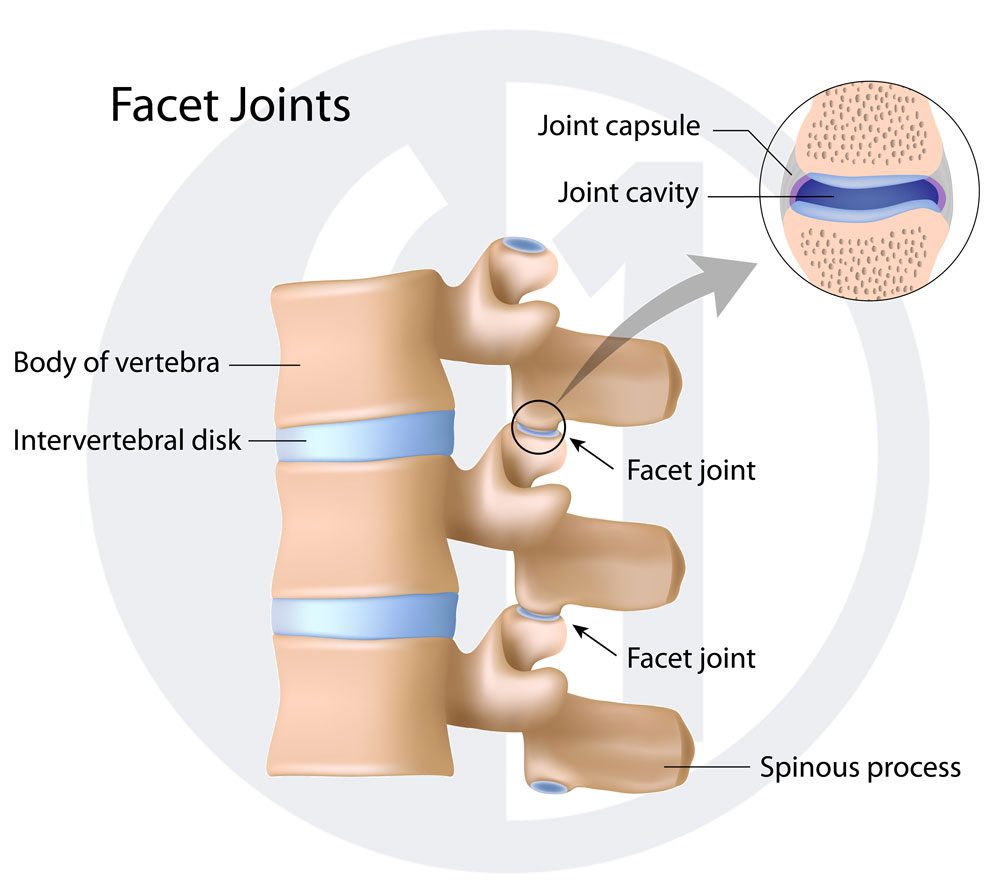Facet Syndrome
Wear and Tear on the Facet Joints in Your Spine
Facet joints help stabilize the spine and limit excessive motion, specifically helping with motions such as bending or twisting. Facet joint syndrome occurs when the facet joints become stressed and damaged and create pain for a patient. Cartilage loss (facet osteoarthritis) is a common cause of facet joint syndrome and occurs when the cartilage that covers the stressed facet joints wears away. The joints then become swollen and stiff and begin to rub directly against each other, leading to the growth of bone spurs along the edges of the facet joints. This damage can occur from everyday wear and tear, injury to the back or neck (e.g., a car accident causing whiplash), degenerative disc disease and/or osteoarthritis.
Because the facet joints sustain a significant amount of wear and tear throughout a person’s life, many people experience at least a mild degree of facet joint degeneration by the time they enter their 50s. This may not always be symptomatic, but it can also become progressively worse with time.
Sometimes, traumatic injuries can also accelerate degeneration in the facet joints. These can result from vehicle crashes, falls and sports activities.
SpineOne treats facet with a combination of rest, anti-inflammatory medication, and minimally-invasive therapies. Our treatments are guided by advanced medical imaging to provide precise placement of the medication for optimal pain relief. These treatments offer effective and lasting relief from this condition and also provide an alternative to open back surgery. Patients who follow this treatment plan report significant reduction of their pain and improvement of their range of motion and quality of life.
Facet Syndrome Symptoms
Symptoms of facet joint syndrome depend upon the area of the spine that is affected. Facet joint syndrome can occur in the cervical, lumbar and thoracic regions.
- If the damaged facet joints are in the cervical spine region (neck/upper back area), the pain may radiate into the neck, the shoulders and can include headaches.
- If the damaged facet joints are in the thoracic spine region (middle back area), the pain may be felt from the mid to upper back areas.
- If the damaged facet joints are in the lumbar spine region (lower back), the pain may be felt in the lower back, the buttocks and the back of the thighs.
